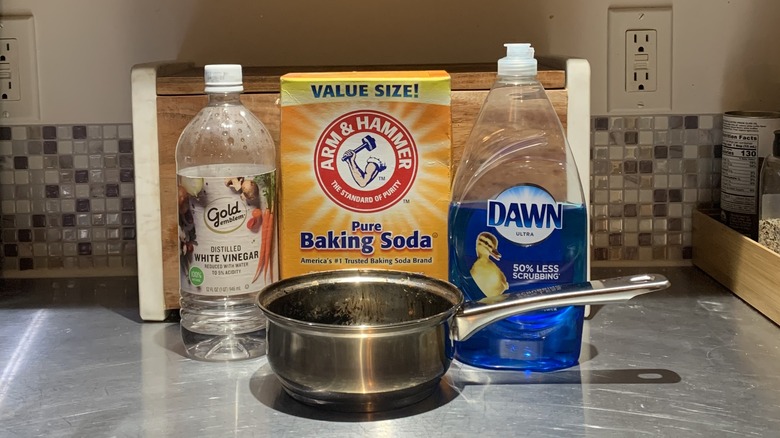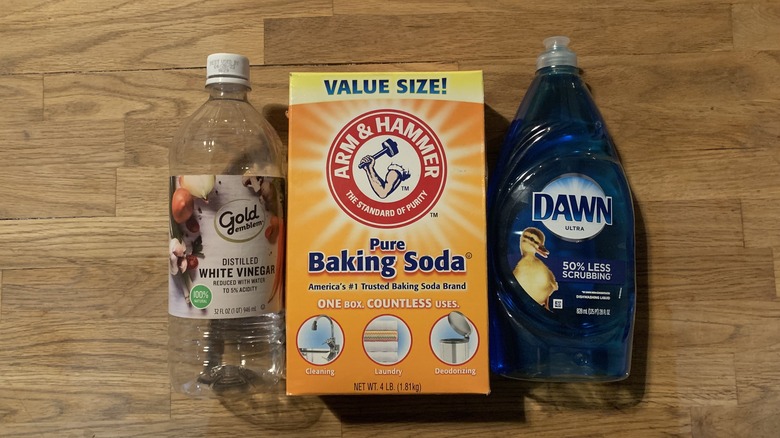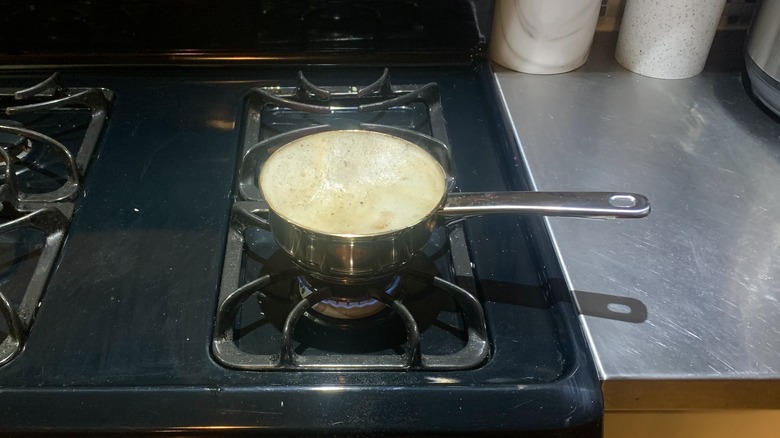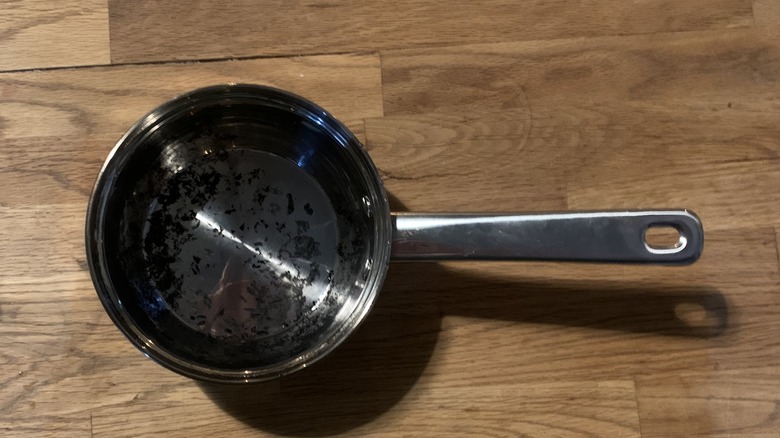One Viral TikTok Hack Promises To Clean Any Burnt Pot. Does It Really Work?
We've all been there, arriving home late from work and walking directly into the kitchen to feed our starving belly. You grab a pot, boil some water, then pour in your desired sustenance. Then, you suddenly remember the new season of your favorite show is out, and tell yourself that walking away from the stove for a few minutes will be fine. However, it wasn't just a few minutes, and now you're smelling burnt food during one of the most intense scenes of the first episode. As you rush back, you're devastated not only by the sight of an inedible dinner, but the pot also looks ruined. Or is it?
TikTok user Judith Collinz released a burnt pot cleaning tutorial and thousands of people have left differing opinions (via TikTok). "Wow, I'm amazed! I thought that pot was done," one user said. Another thought the hack was overrated. "There's an easier way. Step 1: Throw the pot in the bin. Step 2: Buy a new pot." Lucky for you, we've tested out this cleaning hack to see if it's really worth the effort.
What you'll need to try the hack
In order to clean your burnt cookware, Judith Collinz says you'll need distilled white vinegar, baking soda, and dish soap. The TikToker didn't list measurements, but it seems that enough baking soda was used to lightly coat the surface, about an inch of white vinegar, and just a few swirls of soap. We decided to try out this hack on a pot in which we tragically burnt rice.
These ingredients are often used to clean other areas in the home, such as the stove, bathroom, and floor. They work well together because of the chemical reaction they create. When vinegar makes contact with baking soda it releases carbon dioxide gas, making wiping away grime an easier process. Using dish soap is also helpful to ensure the cleaning solution sticks to the dirty surface. And, of course, just like white vinegar, it's also capable of breaking down dirt and grime. This winning combo may keep the rest of your home spotless, but is it strong enough to save a burnt pot?
How our test went
As per Judith Collinz's instructions, we poured all of our ingredients into the pot before placing it onto a burner. We brought the cleaning solution to a boil and set a timer for five minutes. During this time, we noticed that the solution turned a light brown as it released the burnt-on pieces of rice. Once our timer was done, we turned off the heat and let the pot cool down for a bit before transferring it to the sink. In an attempt to get rid of the remaining residue, we used the rough side of a Sponge Daddy to scrub it away. Although most of it came off, there was still a decent amount left over.
We decided to give it another go in hopes that the cleaning solution would deteriorate the rest of the burnt pieces. We allowed it to boil for the same amount of time, but once we got it back to the sink and started scrubbing, we realized that, unfortunately, it still wasn't going to come off.
Did the hack live up to the hype?
After two sessions of boiling white vinegar, baking soda, and dish soap, we were left with burnt residue on both the bottom and sides of the pot. Although the cleaning hack was able to remove most of the larger pieces of rice, it still didn't justify the time, effort, and amount of cleaning supplies we used in this experiment. We're also unsure why it worked on Judith Collinz's pot and not ours. We believe the effectiveness of this hack may depend on the type of food you burn.
Considering that this hack didn't damage our pot or cause any major issues, we suggest giving it a try if you're hoping to salvage your cookware and avoid a trip to the nearby home supply store. It's definitely worth a shot at least, especially since purchasing new pots and pans can be a costly endeavor, depending on the type of material and quality you prefer.



